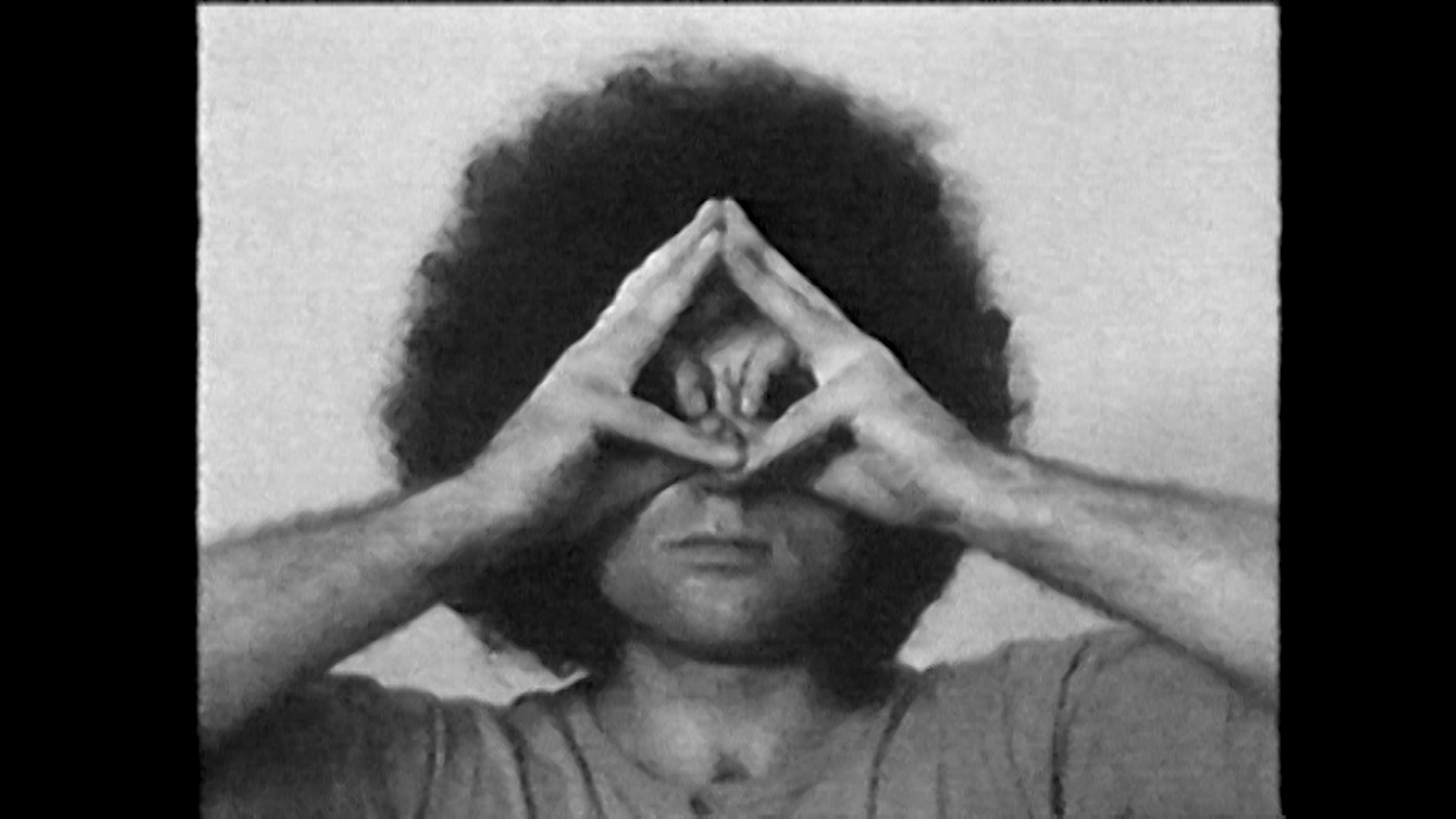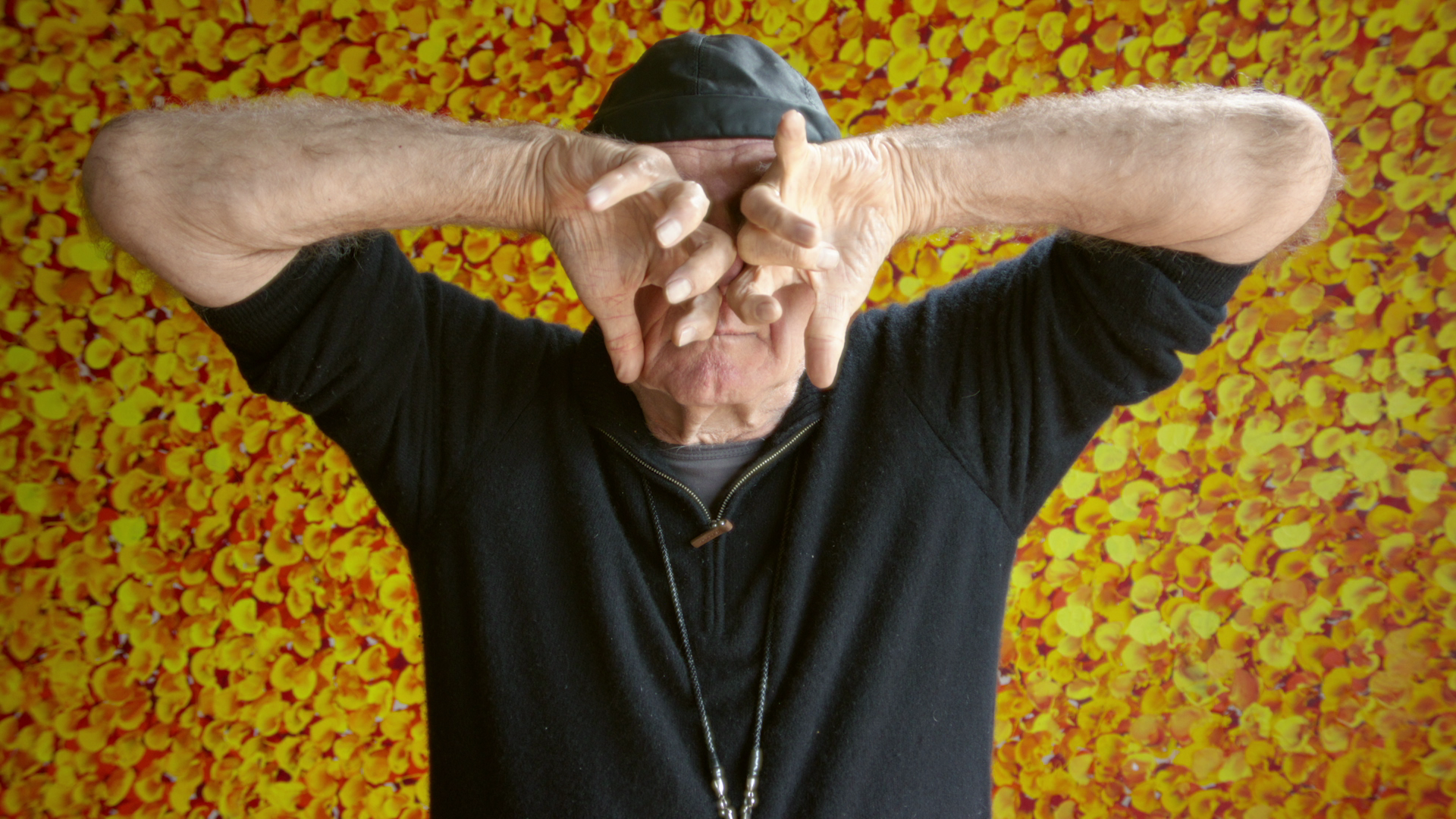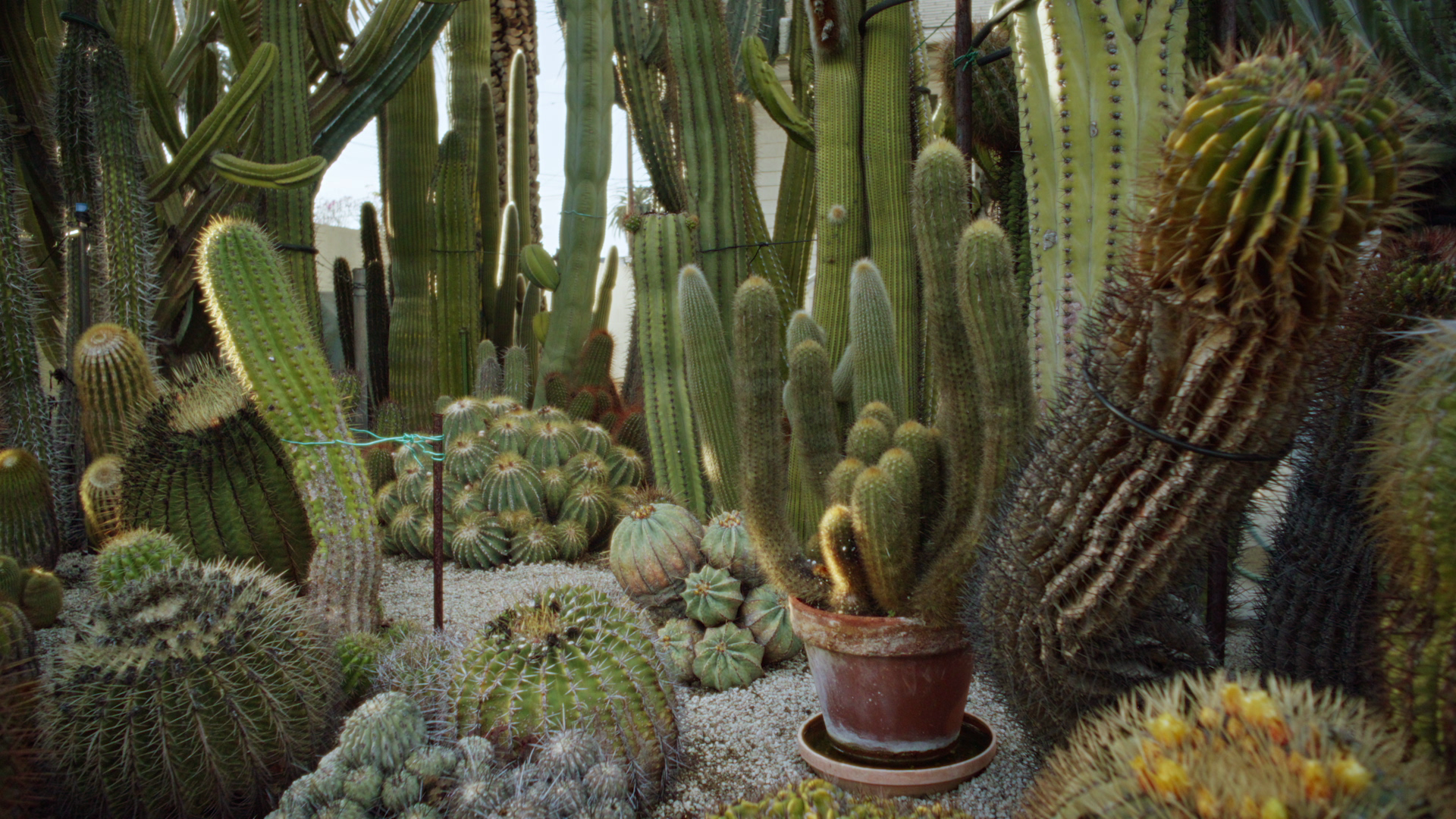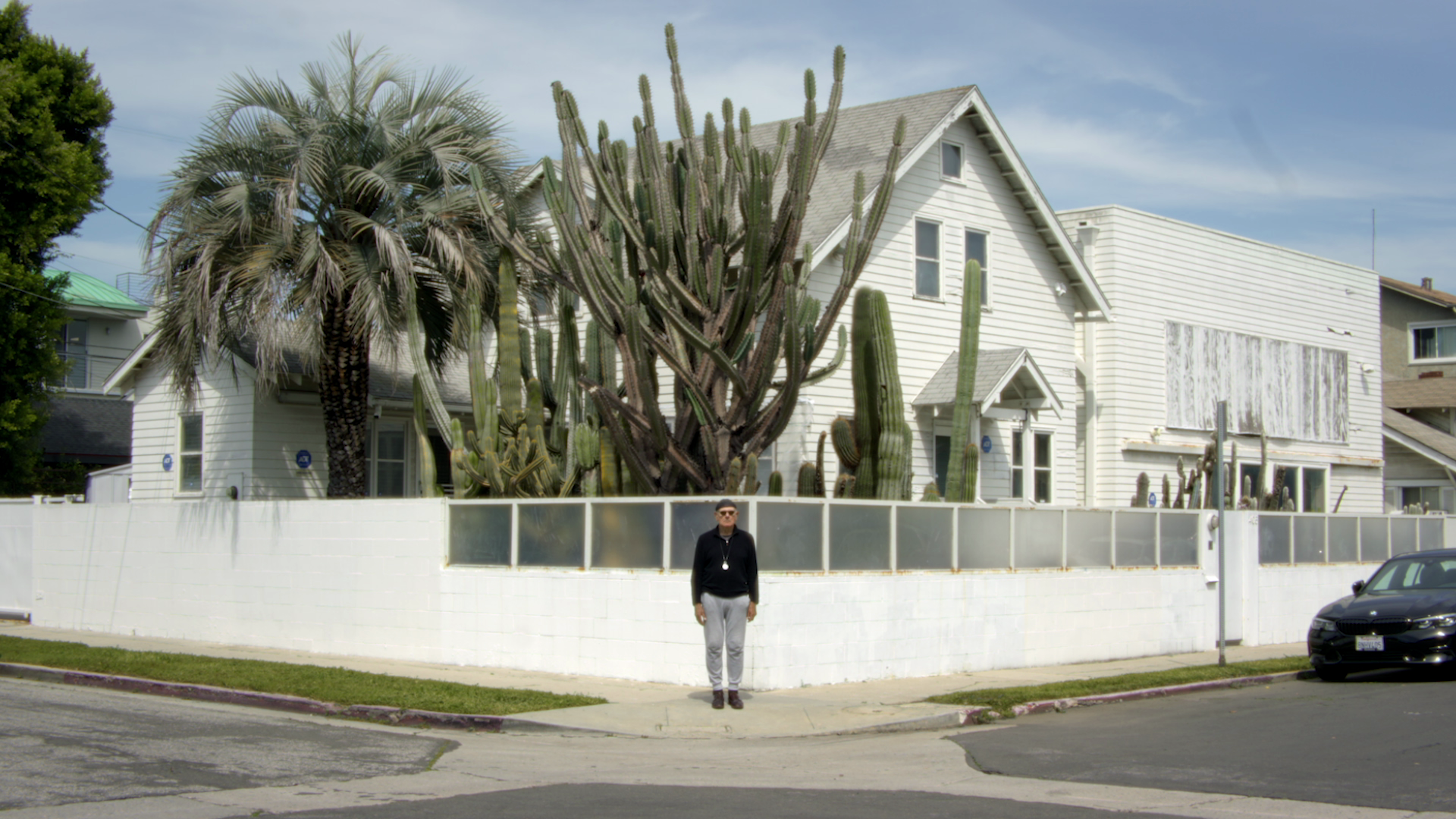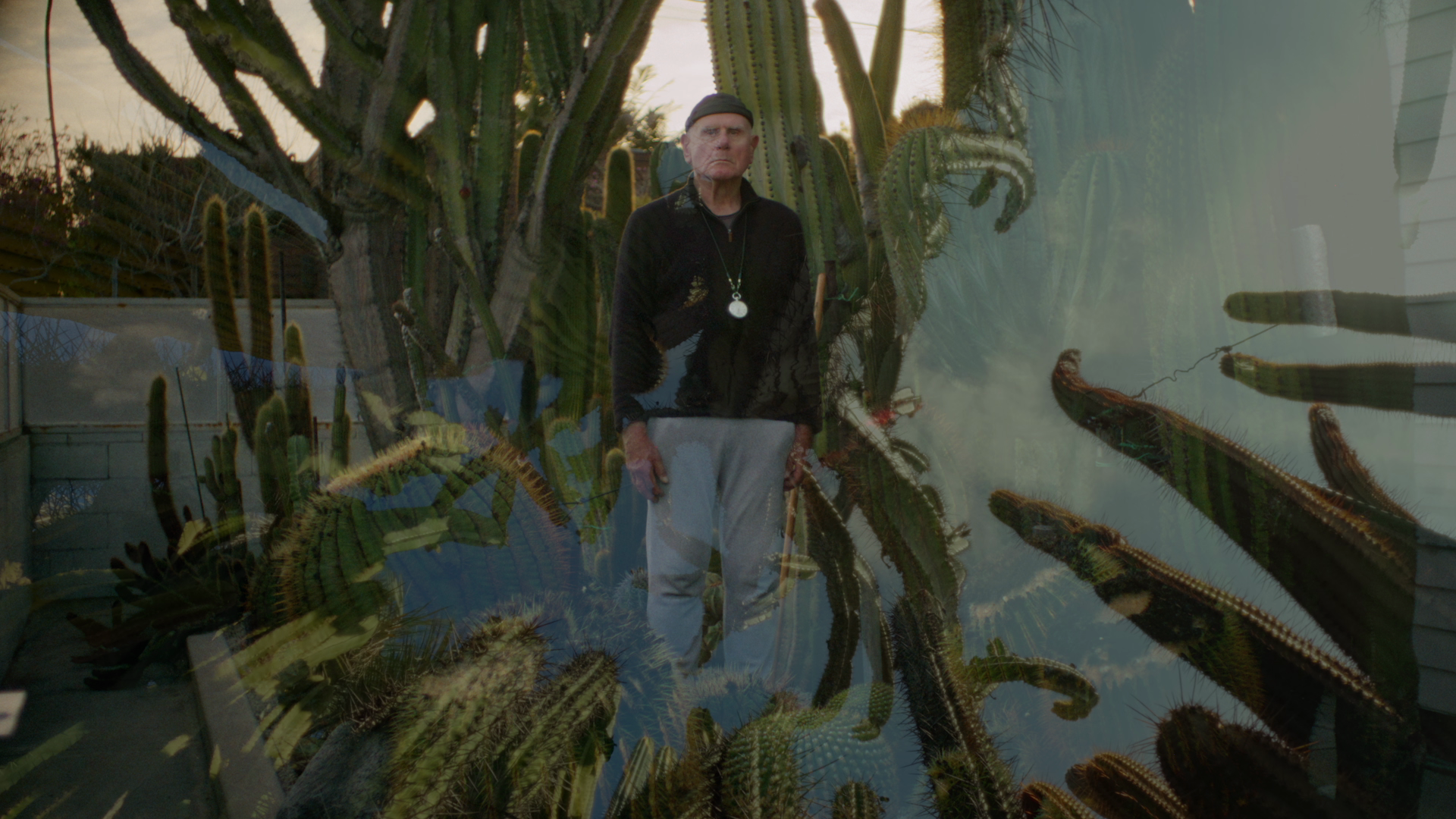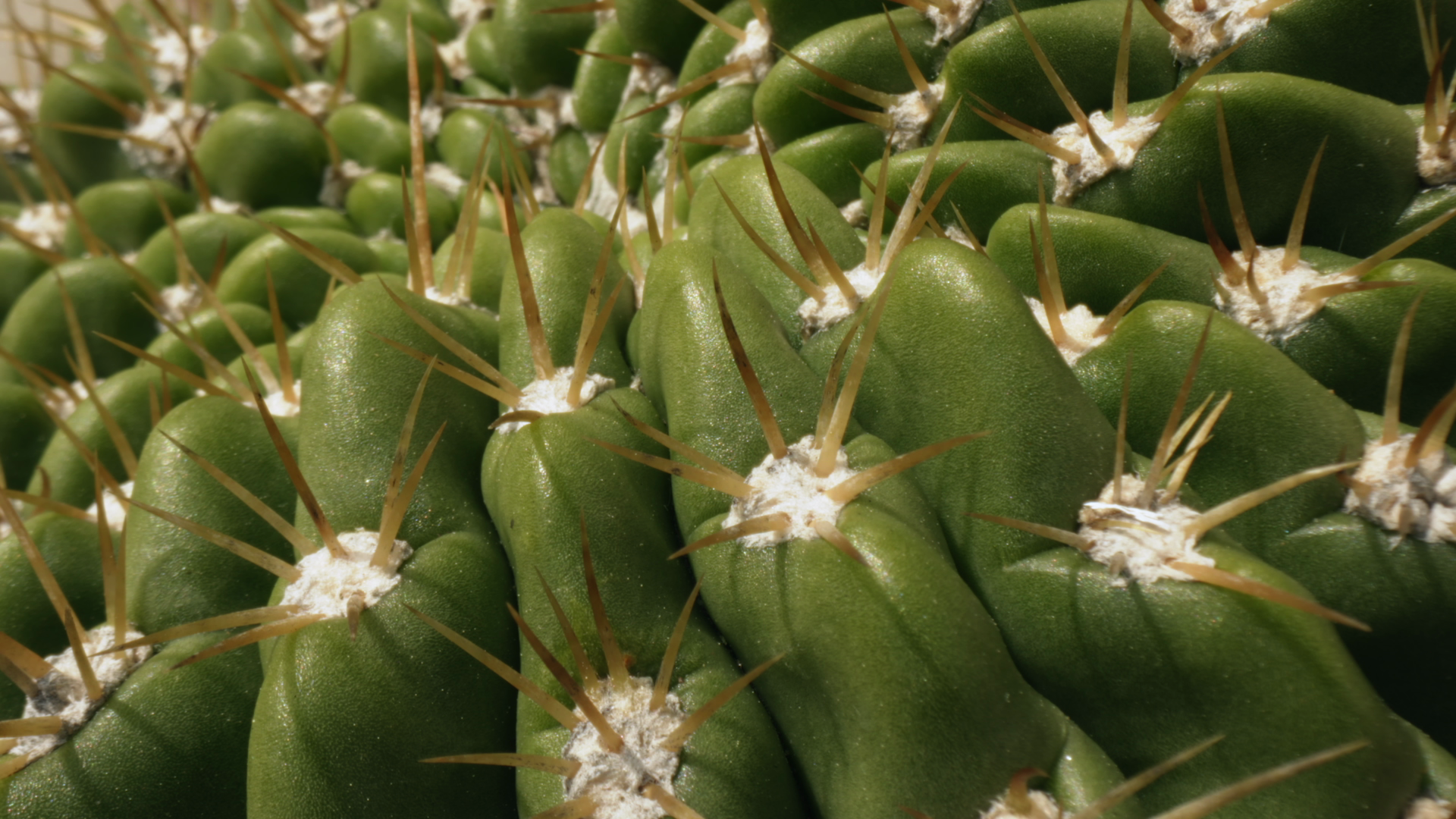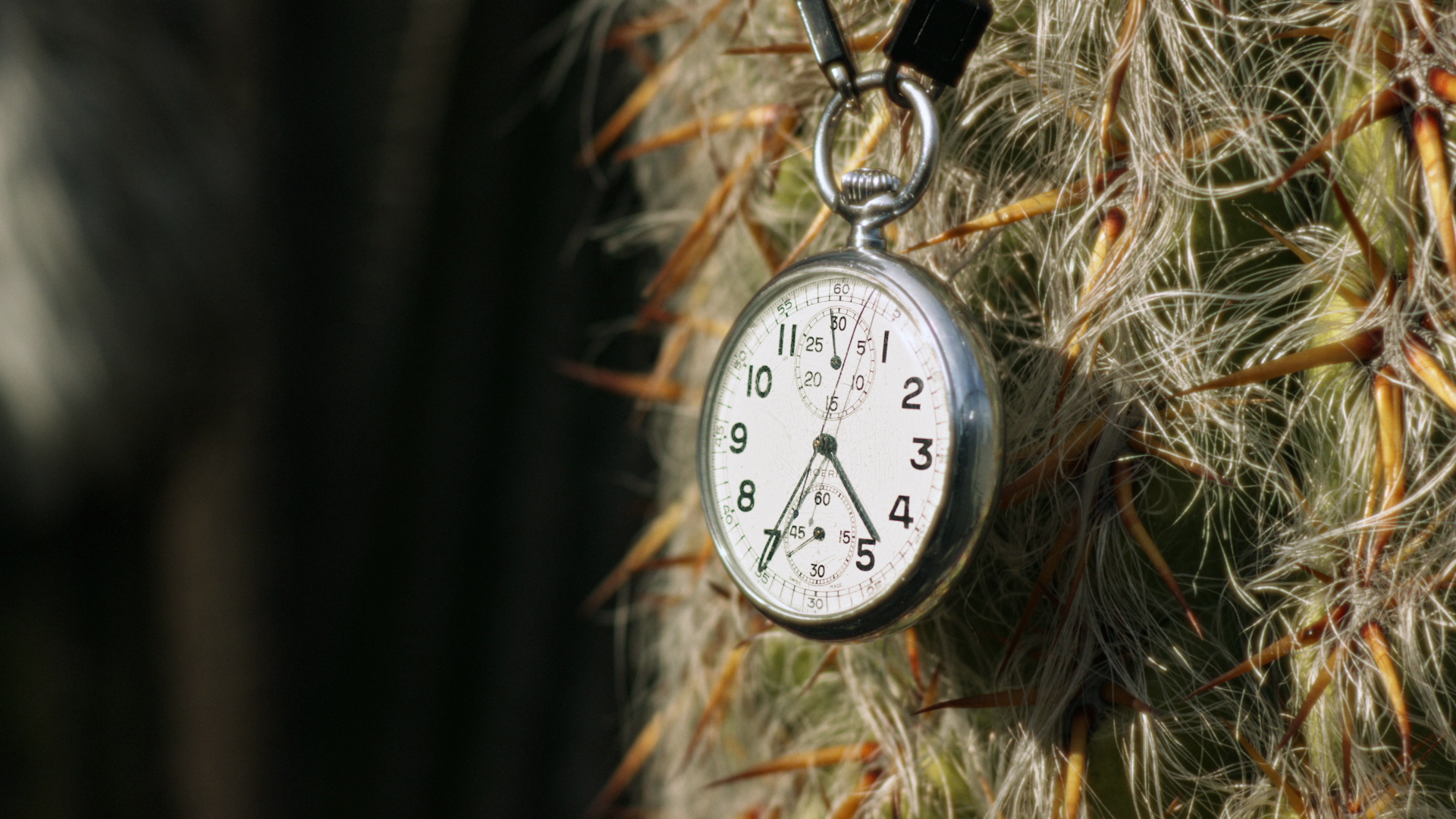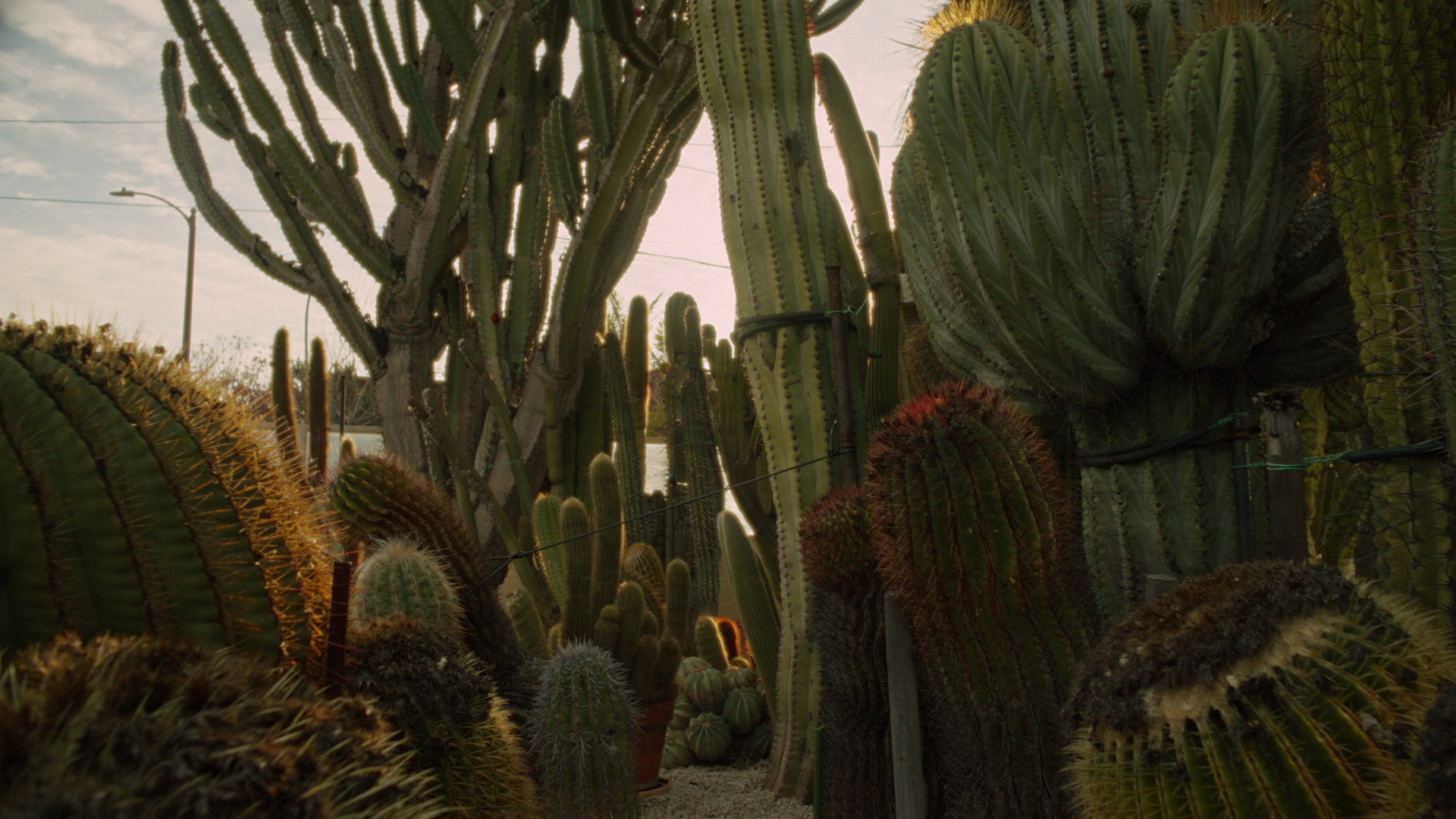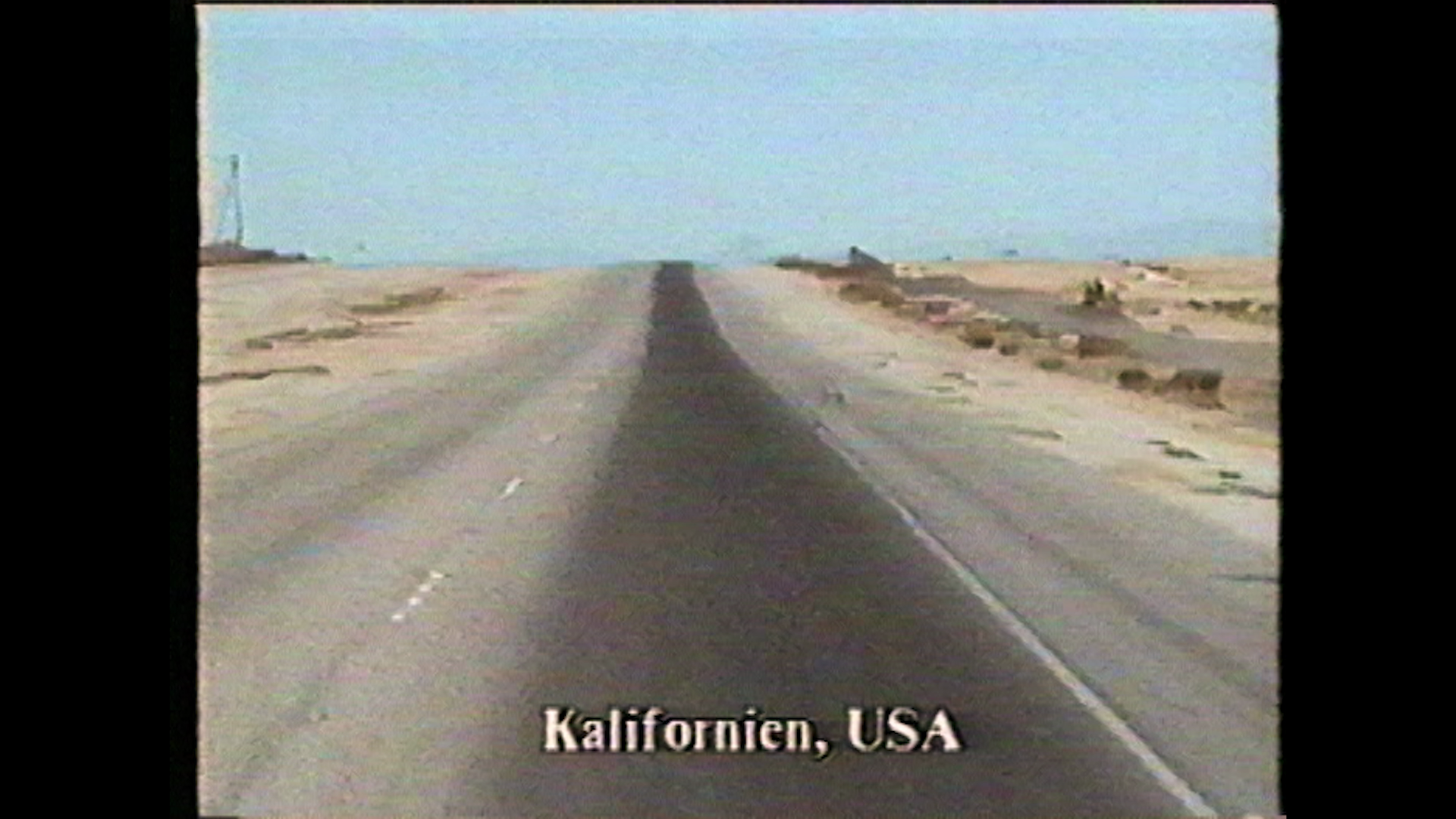The Cactus of Klaus
Unraveling the intertwining of nature and human expression
Directed by Double Solitaire
The Cactus of Klaus explores the enigmatic artist Klaus Rinke's fascination with cacti, showcasing a surreal hidden geometry within his Los Angeles studio. The cactus, firmly embedded in the cultural consciousness of horticulture, represents a lifelong fixation for the mysterious artist, whose legacy as a groundbreaking conceptual artist spans over six decades. In our Q&A with Double Solitaire (Tony Blahd and Lydia Fine), the directing duo behind the captivating documentary, we dive into their creative process, from visually capturing the essence of the cacti to unraveling the intertwining of nature and human expression.
What inspired you to create a documentary about Klaus Rinke and his otherworldly cactus garden?
Klaus is my (Tony’s) uncle. When we visit Los Angeles we often stay at Klaus’s home, but because he lives in Austria much of the year, we actually didn’t know him very well. Until recently we’d probably spent more time with his cacti than with Klaus himself. In fact, we had developed such an appreciation for the cactus garden that we initially conceived the film just as a way of documenting the collection. But when we began talking with Klaus and getting to know him more personally for the first time, his stories, his philosophy, and his gravitational pull as a character really shifted the trajectory of the film.
How did you establish a connection with Klaus Rinke, and what was the process of getting to know him and understanding his lifelong obsession with cacti?
Most of our past interactions with him were with the mythic version of Klaus—stories about the artist uncle living in a castle in Austria, a rare family dinner, or Klaus speaking to a crowd of his fans at a retrospective opening in France. These experiences painted a picture of who he was but never allowed us to actually connect with him. Prior to shooting this time, we spent 4 or 5 days with him at the house, talking about the film but also just getting to know him and trying to get him comfortable with us. After some time we began to meet “the man behind the myth” and hear from him in a much more honest way.
We also caught him in a moment in his life when he was actively thinking about his past—spending much of his days writing about his life and legacy. That introspection helped prime the conversations because a lot of what we ended up discussing was already top of mind for him.
We originally thought the conversations would be much more cactus-focused. Early on Klaus positioned his cacti as a sort of extension of his art practice (‘his living sculptures’) and this more or less aligned with our initial ideas. But as our conversations evolved, to our surprise (and maybe his), the cacti became more of a canvas for broader philosophical thoughts, beyond just art.
“The cacti became more of a canvas for broader philosophical thoughts, beyond just art.”
Did his artistic vision influence the direction of the documentary, and how did you navigate the balance between his perspective and your creative interpretation?
Klaus didn’t directly influence the direction on set necessarily, but his past work was a huge inspiration for us when conceptualising the film.
One day when we sat with him he got serious and said, “What is this film you plan to make—It must be an art film!” We showed him all of our prep work: print-outs of his films, photography, and body art work, brought to set with the idea of matching compositions, framing, blocking—crafting the formal aspects of the film in homage to him. As we started to explain the setups we wanted, Klaus appreciated that we were so inspired by his work and became a ready and willing participant in whatever we asked of him. “Walk over here, stand over there, recreate this pose.” We were drawing on his past work so he knew the body language we were looking for. Really quickly he dropped back into his muscle memory of being a body artist and the discipline he used in his past works.
The footage of the cactus garden reveals a surreal hidden geometry. Can you elaborate on your creative approach to visually capturing the essence of the cacti?
As Klaus says in the film, “it’s pure mathematics.” Cacti are made up of repeating patterns, but that repetition actually makes them visually interesting from nearly every distance. The same principle applies to painting behind Klaus during the interview—the pattern begins to look different as we get closer and closer to it. We took this principle to an extreme with the macro shots of the cacti. We used a long probe lens to allow the camera to really move through the cacti in ways that we could never actually see with our eyes.
Furthermore, each cactus has its own personality and looks interesting at almost every angle. This proved to be a problem in a certain sense—after we wrapped we decided to come back for another day to keep shooting cacti, but we had to cut ourselves off eventually because we probably could have shot for another week.
The documentary explores the intertwining of cacti and human expression. How did you approach structuring the narrative to effectively convey the connection between these elements throughout the film?
Initially, we really focused on how cacti relate to the major themes of Klaus’s artwork: time, water, and the exploration of form. The broader, more universal themes were uncovered by our editor [Nathan Petty] and really surprised us when he started to put the film together. The film became more compelling as it moved beyond the connections to art and began to probe the connections between the cacti and Klaus’s life in a larger sense: a focus on more universal, but often more difficult themes such as ageing, legacy, and mortality.
The visual aesthetic of the documentary is striking. How did you decide on the visual style to convey the unique atmosphere of Klaus Rinke's studio and his artistic world?
Luckily for us when you step into Klaus’s studio you step into a fairly cinematic world. We did very little set dressing. The backdrop for the interview is a painting from a series he is working on—it just lives on that wall. We liked being able to frame him amongst his current work while looking back over his career.
After the interview, he offhandedly mentioned he had some old VHS tapes from his archive that we could borrow. We immediately had them scanned and were blown away with what we found. The archival material was from films he had made himself and exhibitions he had captured, which lent an authenticity to the visual style of the film. The most amazing find on the tapes was a shot of the house exterior from the early 90’s, captured before it was enveloped by the cactus. Out of pure chance we had shot the house in the present day from the exact same angle. The cacti seem to grow so slowly in the garden, but being able to cut between the past and present really visualises time in a dramatic way.
“The film became more compelling as it moved beyond the connections to art and began to probe the connections between the cacti and Klaus’s life in a larger sense: a focus on more universal, but often more difficult themes such as ageing, legacy, and mortality.”
Every project comes with its set of challenges. Were there any specific challenges you faced during the production of The Cactus of Klaus, and how did you overcome them?
We had an embarrassment of riches. Klaus is an incredible storyteller. There was much more in our conversations that we just didn’t have time for or didn’t make sense in this film. Klaus’s life is incredibly interesting—stories of growing up in Germany during WW2, traveling and showing art around the world in the 70’s, his friends and colleagues—many of whom are famous artists and musicians. We realised pretty quickly in the edit that we had to stay focused on just a few ideas if we were going to make it work.
Also, the cactus — as mentioned, we could have shot for several more days if not weeks. They change over the course of the day and once you start to really look at them, endlessly new ways of capturing them emerge. We left so many “favourite cacti” on the cutting room floor.
What's next for you?
We’ve talked a bit about making a longer form piece about Klaus, but have no set plans yet. There’s much much more to his story that we’d like to explore. We’re also in the midst of developing a children’s TV show that we’re pretty excited about.
Also, The Cactus of Klaus is going to be screening at Slamdance Film Festival in January. We’re excited for people to see it on a big screen, but we won’t be attending—we’re expecting a baby around the same time!
Directed by: Tony Blahd & Lydia Fine
Produced by: Double Solitaire & Little Moving Pictures
Executive Producer: Jeremy Summer
Director of Photography: Jonny Look
Production Sound Mixer: Will Shultz
Editor & Sound Designer: Nathan Petty
Assistant Editor: Caleb Stumpfl
Colorist: Ayumi Ashley at Rare Medium
Audio Post: Pico Studio
- Producer: Ellis Hawes
- Sound Design & Re-Recording Mixer: Jamie Hunsdale
Featuring Music by Mort Garson and Chapelier Fou
Title Design: Double Solitaire
Archival material courtesy of Klaus Rinke

